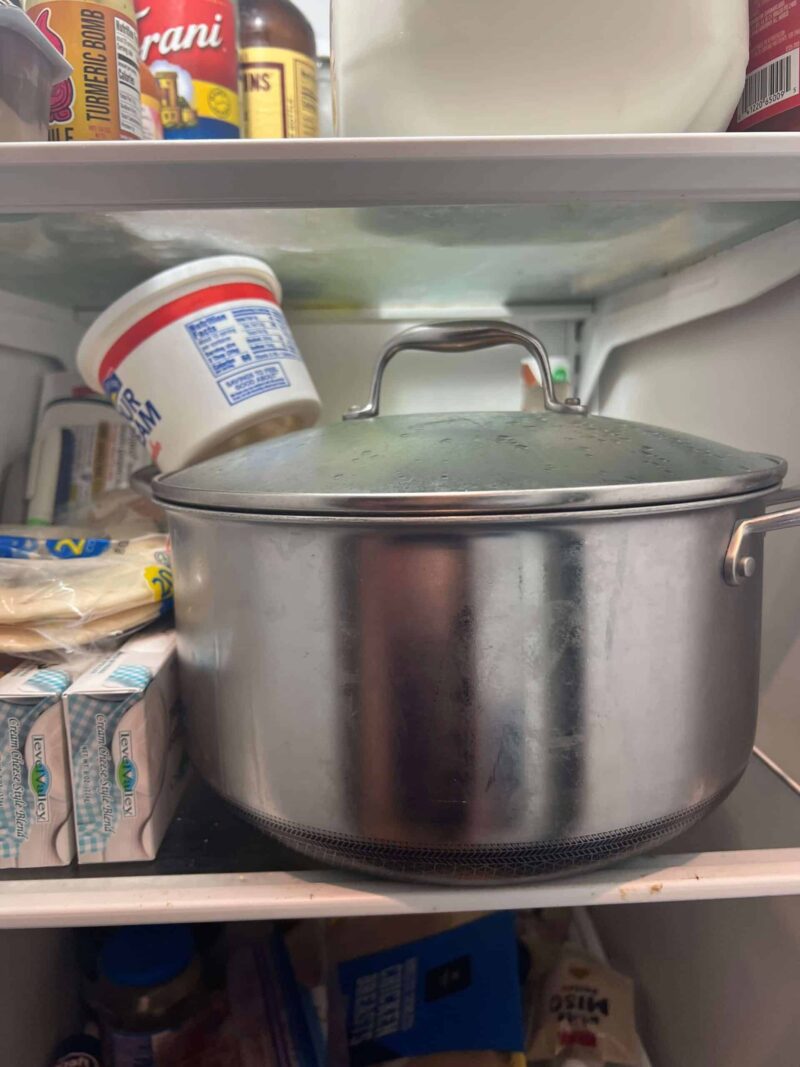When it comes to food safety, the way you handle leftovers matters just as much as how you cook your meals. One common question that often sparks debate is: should hot leftovers be cooled before putting them in the fridge? The answer can make a big difference not only in keeping your food safe but also in preserving its flavor and nutrition.
Importance of Proper Food Handling
Why It Matters
Safe food handling is about much more than avoiding a stomachache—it’s about protecting your overall health. Poor practices can allow harmful bacteria to thrive, which can turn a tasty dish into a serious health risk.
The Risks of Doing It Wrong
If hot food isn’t stored correctly, bacteria can multiply quickly. This not only puts your health at risk but can also affect the taste, texture, and quality of your leftovers.
The Dangers of Hot Leftovers
Bacterial Growth
The biggest concern with hot food left sitting out is bacteria. When food stays warm for too long, it creates the perfect environment for germs to multiply—sometimes doubling every 20 minutes.
Loss of Food Quality
Besides safety, slow cooling can make your food lose flavor, texture, and even nutrients. That means the delicious meal you worked hard to make won’t taste as good the next day.
Best Practices for Cooling Hot Leftovers
The 2-Hour Rule
Always aim to cool and refrigerate leftovers within two hours. This golden rule drastically lowers the chance of bacterial contamination.
Divide Into Smaller Portions
Large batches of food hold heat for too long. To help them cool faster, separate them into smaller containers before refrigerating.
Use Shallow Containers
Shallow, wide dishes allow heat to escape quickly, bringing the temperature down much faster than deep containers.
Common Misconceptions
Myth: Leaving Food Out to Cool Is Fine
Many people think it’s okay to let food cool on the counter before refrigerating—but that’s not safe. Leaving food out too long keeps it in the “danger zone,” where bacteria thrive.
Fact: The Refrigerator Is Your Best Friend
Your fridge isn’t just for storage—it’s one of your biggest tools for food safety. It slows down bacterial growth and helps lock in freshness.
Temperature Guidelines
Ideal Refrigerator Temperature
Make sure your fridge stays at 40°F (4°C) or below. This ensures your food stays safe and fresh for longer.
Avoid the Danger Zone
The danger zone is between 40°F and 140°F (4°C to 60°C). Hot leftovers should be cooled quickly so they don’t linger in this unsafe range.
Storage Tips for Hot Leftovers
Choose Safe Containers
Always use sturdy, food-safe containers designed for fridge storage. Avoid thin or cheap containers that can warp when exposed to hot food.
Label and Date Everything
Mark your containers with the date so you know what needs to be eaten first. This helps prevent food waste and ensures you’re enjoying meals at their best.
Benefits of Proper Cooling
Keeps Flavor Intact
When cooled the right way, your leftovers will taste just as delicious when reheated as they did the day you made them.
Preserves Nutritional Value
High heat can cause nutrients to break down faster. By cooling food promptly, you keep more of those valuable vitamins and minerals intact.
Properly cooling leftovers isn’t just about avoiding foodborne illness—it’s also about protecting flavor, nutrition, and your family’s health. So next time you’re packing up a meal, remember these tips and let your fridge do the heavy lifting.
